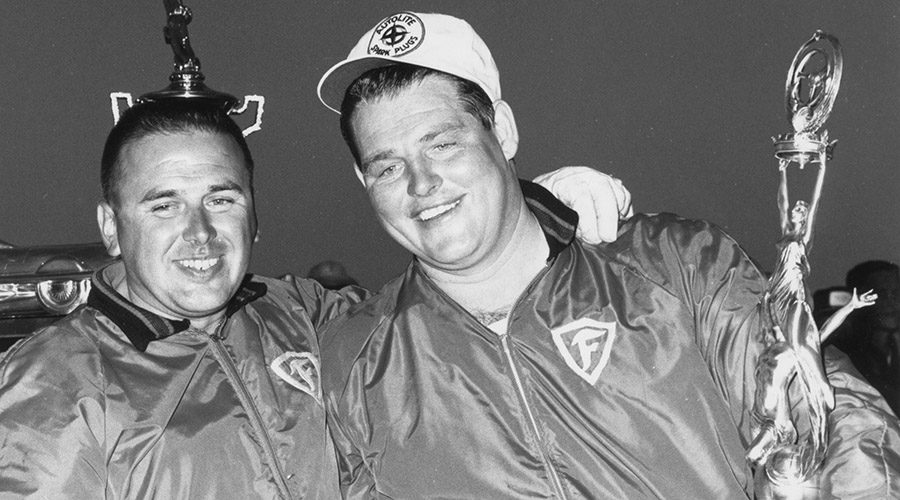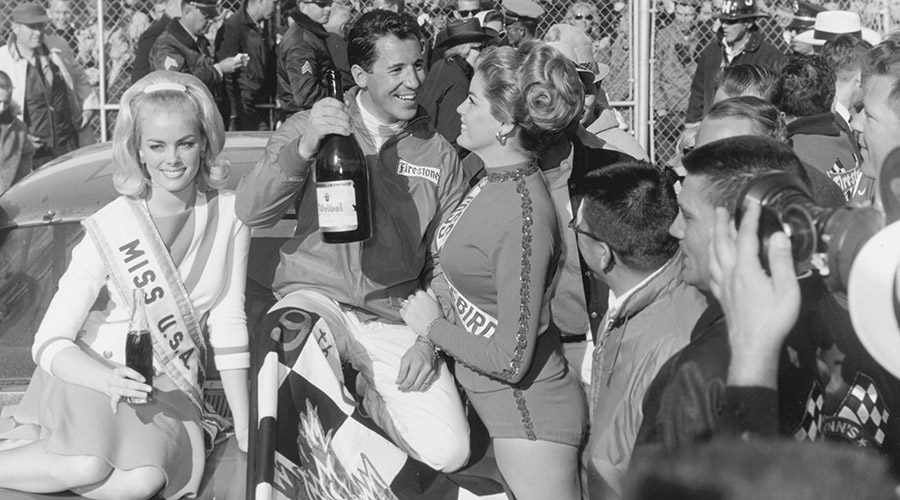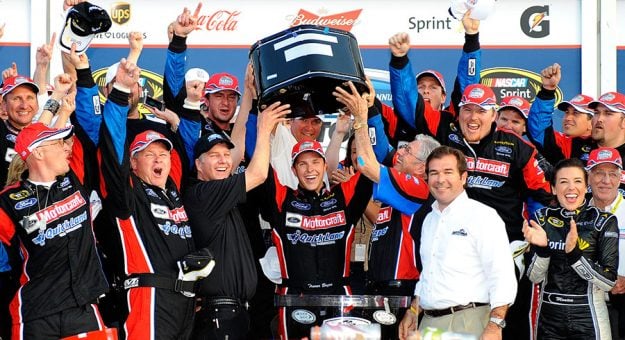From a fist-fight inside of turn three to dramatic finishes and huge crashes, the Daytona 500 has written a unique chapter in the history of American auto racing.
The brainchild of NASCAR founder Bill France, the Daytona 500 has been run each February since 1959 at Daytona Int’l Speedway in Daytona Beach, Fla.
The list of winners includes icons of the sport such as the Earnhardts, the Pettys, David Pearson, Cale Yarborough and Darrell Waltrip.
It also features several upset winners, including these six drivers who were surprise visitors to victory lane at the Daytona 500:

TINY LUND — 1963
DeWayne “Tiny” Lund ventured to Daytona Int’l Speedway without a ride for the 1963 Daytona 500, and the 33-year-old veteran racer from Harlan, Iowa, ended up scoring his initial NASCAR Cup Series victory on the sport’s biggest stage.
Ten days prior to the 500, Marvin Panch was testing a Maserati sports car in preparation for the Daytona Continental when the NASCAR star was involved in a fiery crash. Lund was among a group of bystanders who rushed to the scene and pulled Panch to safety.
From his hospital bed, Panch asked cars owners Glen and Leonard Wood to let Lund replace him in the No. 21 Wood Brothers Racing Ford for the fifth running of the Daytona 500.
On race day, the Wood brothers outfoxed their rivals by making one less pit stop. They also reduced Lund’s time on pit road by running the entire 500 miles on the same set of tires.
Lund led a total of 17 laps, including the last eight, as he beat fellow Ford driver Fred Lorenzen to the checkered flag by 24 seconds.

MARIO ANDRETTI — 1967
Mario Andretti, a two-time Indy car national champion from Nazareth, Pa., recorded an upset victory for the USAC brigade when he won the ninth running of NASCAR’s premier event – the Daytona 500 – on Feb. 26, 1967.
Driving the No. 11 Ford Fairlane entered by Holman Moody and prepared by crew chief Jake Elder, Andretti led 112 of the 200 laps and had built a 22-second advantage before Richard Petty’s blown engine with two laps remaining resulted in the race ending under the caution flag.
“I think Freddy (Lorenzen) and Tiny (Lund) were messing around with each other and I slipped away,” Andretti said in Greg Fielden’s “Forty Years of Stock Car Racing.” “I was just about out of gas. That last caution flag helped out. I pedaled around in fourth gear those last two laps.”
Throughout Speedweeks, the 26-year-old Andretti amazed industry insiders with his ability to drive a “loose” car, which translated to speed on race day. In only his seventh NASCAR Cup Series start, Andretti became the first “outsider” to capture a Daytona 500 trophy.

PETE HAMILTON — 1970
Pete Hamilton, a 27-year-old relative newcomer to big-time racing, stole the thunder from NASCAR’s superspeedway stars when the wheeled the No. 40 Petty Enterprises Plymouth Superbird to victory in the 12th annual Daytona 500 on Feb. 22, 1970.
Making only his 21st start in NASCAR’s premier division, the former Jazz band drummer from Dedham, Mass., led only 13 of the 200 laps as he beat David Pearson to the checkered flag by three car lengths.
“It’s an amazing thing to work with the Pettys,” said Hamilton. “I worked with them from scratch on this car and that’s a real experience. We worked from six in the morning until 12 at night and that’s really working.”
Teammate Richard Petty, who was an early exit due to an engine failure, made a key call for Hamilton to stop twice for a total of four tires during the race’s final caution period. Pearson’s Holman Moody squad changed only left-side tires.
Pearson, who led 82 laps, claimed he let Hamilton pass him on lap 192 in preparation for a late-race slingshot, a move he was never able to execute.
Click below to continue reading.
